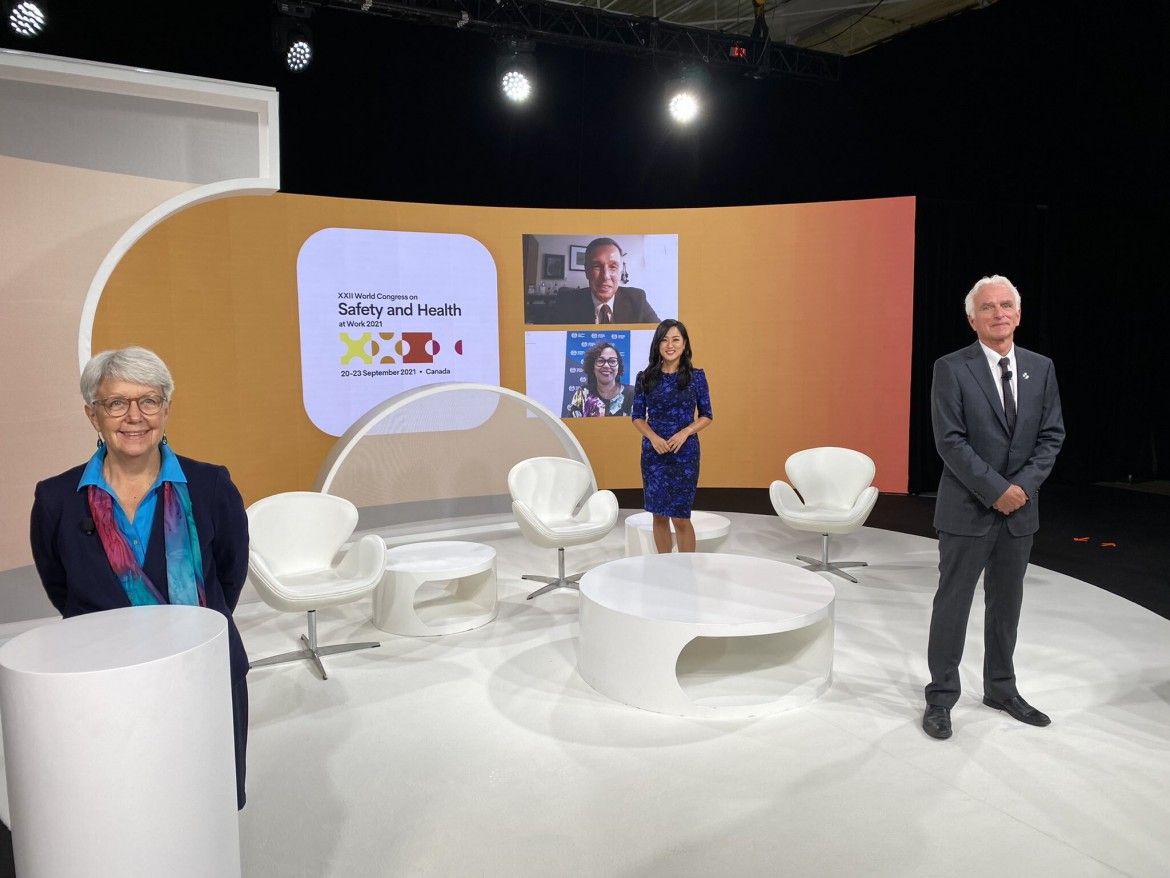When the Institute for Work & Health (IWH) and the Canadian Centre for Occupational Health and Safety (CCOHS) were awarded co-hosting responsibilities for the XXII World Congress on Safety and Health at Work, the theme they chose was "Prevention in the Connected Age."
That choice was made in 2017—well before the global pandemic. But that theme remained at the core of the September 20-23, 2021, event. “Unable to travel, we found a way to gather, meet, share, exchange, learn and connect in ways that we could not have imagined even a decade ago. And this is how we will connect in the future,” said IWH President Dr. Cameron Mustard in his closing remarks.
That theme, of the power of global connection, was heard repeatedly throughout the conference, a virtual gathering of about 2,000 occupational health and safety (OHS) professionals, labour and employer representatives, service providers and policy-makers from around the world. The conference, organized every three years by the International Labour Organization (ILO) and the International Social Security Association (ISSA), featured keynotes, technical sessions, symposia, posters, and entries into the International Media Festival for Prevention (IMFP).
From the many themes connecting the global OHS community, here’s a shortlist of five key ones:
1. Social dialogue improves OHS outcomes
Prevention efforts are more likely to succeed when they are developed by government, employer and worker representatives together. We’ve seen how social dialogue was at the heart of the COVID response in the world of work,
said Martha Newton, ILO deputy director-general for policy. Social dialogue is as powerful a tool as any.
As conference participants heard in numerous success stories shared at the Congress—from New Zealand’s strategy to reduce forestry deaths to Canada’s involvement in a new ILO convention on eliminating violence and harassment at work—tripartitism was key to their success. In particular, OHS initiatives—at the workplace, in an economic sector, or at the level of national policy—can only succeed with the participation of workers and their representatives,
noted Mustard.
2. OHS professionals must address both new and traditional hazards
Worker physical and psychological safety are at risk when task assignment and work pace are set by artificial intelligence and machine algorithms, when networked equipment and facilities are hijacked by malicious hackers, or when employment relationships are eroded by service and production models based on platform-enabled microwork. The OHS world needs to stay vigilant for these and other new hazards as the pace of technological change gathers steam, participants heard. Even remote or telework, adopted nearly overnight around the world at the onset of the pandemic, can expose workers to risks such as isolation, depression, domestic violence and inability to disconnect. And yet, noted Joachim Breuer, president of ISSA, Traditional OHS risks still exist and deserve our full attention. The two million workers who die every year (around the world) must not be forgotten.
3. Safety culture matters
Whether discussing emerging risks or long-standing health and safety challenges, speakers and conference participants returned often to the potency of safety culture. The term refers to the shared belief, embraced by everyone throughout the organization, that all accidents are preventable, and no one should be hurt or sickened by or at work. Participants also heard about the progress made since the launch of ISSA’s Vision Zero program at the previous World Congress. Over 15,000 enterprises, organizations and OHS trainers have signed up to the campaign. As one multinational business leader shared, in describing how Vision Zero came to be adopted at his organization, Zero harm is the only goal that makes sense.
Or as Breuer described it, Vision Zero is a powerful message of hope and enthusiasm.

4. The pandemic has taught many OHS lessons
The OHS profession’s experience during the pandemic has given rise to many lessons, including some that are yet to be fully understood. Some of the learnings presenters discussed included the importance of social security systems in times of emergency, the need for these systems to be flexible in their response, the need to protect the most vulnerable workers (especially migrant and informal sector workers), the importance of OHS to public health, and the need for good data-collection systems on work exposures.
5. Storytelling is a powerful way to communicate OHS messages
Participants heard again and again of the importance of communication. As one presenter said of her experience during COVID, Communicate your health and safety message, multiple times a day, using different ways and on many platforms and channels.
One of the more effective methods of communicating is storytelling, delegates heard. It can bring different perspectives into focus, deepen empathy and make messages stick. This was evident in the creative and innovative entries from around the world to the International Media Festival for Prevention. How can we use storytelling in our workplace communications to strengthen training comprehension and retention?
said CCOHS CEO Anne Tennier. How can we communicate risks and emerging health and safety issues once the hazard assessments are done? You can’t always fight emotion with facts, particularly with emerging issues.
World Congress delegates heard and took part in conversations about these and a vast array of other prevention topics. Knowledge sharing was often spoken of, and it was also very much on display. The conference saw the enthusiasm with which participants shared their perspectives and know-how—across national boundaries, disciplines and institutional roles.
As one Canadian OHS leader said, in describing her team’s impression of the conference, They were absolutely enamoured by the experience—so much so, that they have all described a rekindled passion for their careers and their mission of prevention. My team has been fighting an epidemiological forest fire with buckets for 18 months. So, to see the inspiration return to their spirits was the best therapy for both them and me!